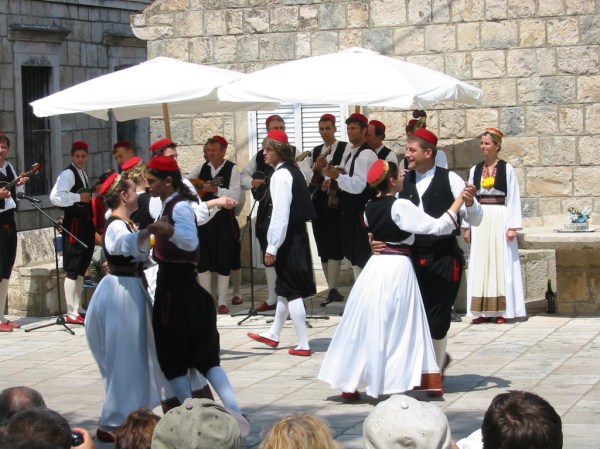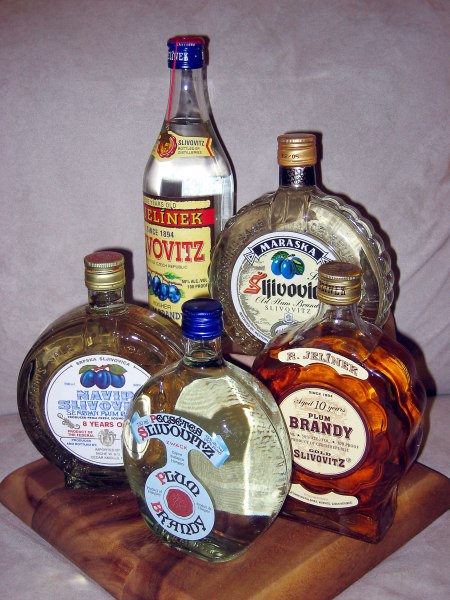Joyful Times in Croatia
Papa loved the people and their culture. Although they were poor and had to work hard to make a living, they knew how to celebrate. After they brought in their harvest in the fall, or when they gathered at a wedding banquet or welcomed a newborn child into their community, they made good use of these festive occasions. Many of the songs Papa was so fond of listening to come from the Balkan Roma, the people once called Gypsies.

If one grew up on a steady diet of Western pop music, Balkan melodies take a little bit of getting used to. While many of the tunes use familiar rhythms, including the driving rhumba beat, some Balkan tunes add spice using asymmetrical meters. The music tells only half the story. The dancers, prompted by the intoxicating rhythm and the ever-increasing tempo, suddenly emerge from the cheerful crowd. The steps in the Balkan dances can be delightfully simple or maddeningly complex. Most are line dances; they rarely occur in couples. What does the music sound like that Papa loved so much? It depends on where you go. In Croatia and Serbia, there is the tamburica tradition of plucked-string instruments. But the musicians are also using accordion, violin and woodwinds. Add to this the wailing melodies delivered by wedding bands that play songs popular across the entire region. Now we will understand Papa’s fascination with the Balkan people, their music, dances, and customs.

When it came to alcoholic beverages, nothing would appeal to Papa’s taste buds more than the famous Slivovitz. Orchardists have been producing the sweet, velvety plum brandy for hundreds of years, primarily in Croatia, Serbia, Poland, Hungary and Bulgaria. Late-summer plums are the most commonly used: deep purple, ovoid and freestone, such as damson and Italian prune types. The fruit is pierced, covered with sugar and alcohol and stored in a cool, dark place for months. The most exquisite and complex slivovitzes age in casks, like wine or bourbon.
When we were children, my parents travelled with us to Yugoslavia by car. We really liked it there, people, music, food, everything, just like your father in law. They also make a splendid pear liqueur, Kruskovac.
LikeLiked by 1 person
The Kruskovac is already on my next shopping list.
LikeLiked by 1 person
Haha, right you are! I found a recipe, it is actually based on Slivovic.
LikeLiked by 1 person
Now I need to find a clip of that music and some slivovitz!
LikeLike
Hmm, I must try that plum brandy someday! We have never been to Croatia. So I will have to add that country to our someday list, too!
LikeLiked by 1 person
I read so many good things about this beautiful country that I might be tempted to visit it even at my advanced age. To honour my father-in-law I often take a sip of that Slovovitz bottle.
LikeLike
My parents took us every year on trips to former Yugoslavia , that’s probably 60 years ago. I loved the country and it’s people, mostly we spent wonderful times on those little islands, the ocean was crisp clear, Back than it was so affordable for a family of five. I remember their most famous dish, called Cevapcicci,a tomato rice dish with grilled meat skewers, for Slivovitz I was too little.
Thank you for sharing your father’s likings, Peter and have a great weekend.
LikeLiked by 1 person
These are sweet and precious memories for you, Cornelia.
LikeLike
Yes they are, Peter. Thank you
LikeLiked by 1 person
Gypsies.
My father loved them too .
I don’t know the reason, because in ww2 he was in italy.
I once saw tears in his eyes while listening to the music of the Balkan.
LikeLike
As you know, Yugoslavia came into being after World War 1 as an artificial country made up of diverse ethnic groups. Even though some people from those groups intermarried, we saw how little it meant once forced unity under communist dictatorship disappeared in 1991.
LikeLiked by 1 person
How interesting! I didn’t know anything about Balkan music and dancing, but it must be wonderful to experience.
LikeLiked by 1 person
Sehr schön! What a wonderful legacy and rich history! I was in Eastern Europe die but a brief spell but it was rife with history and emotion.
Thanks for sharing this Peter!
LikeLiked by 1 person